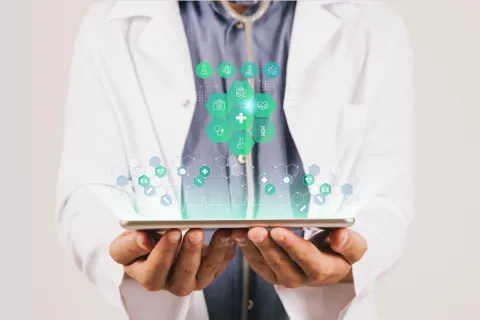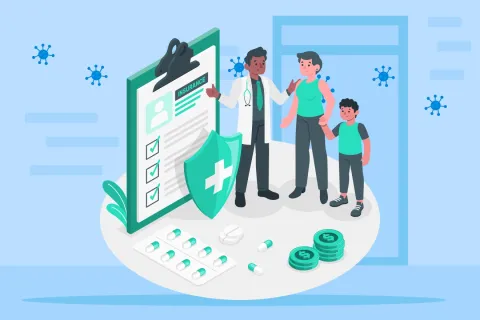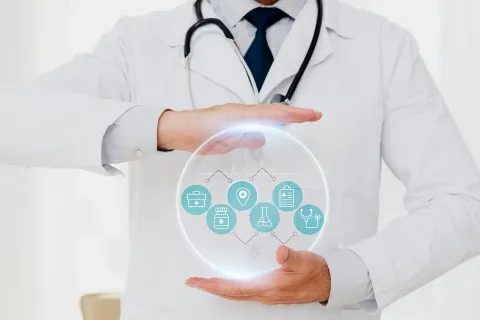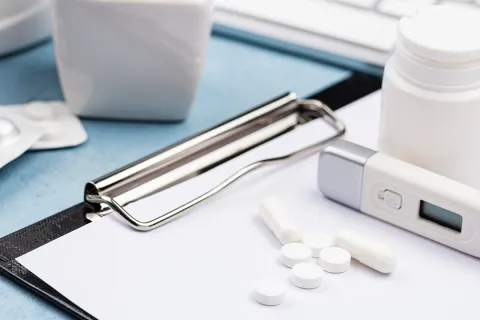
COVID-19 caused major disruption in Pharmacovigilance (PV) efforts, particularly post-marketing surveillance. Due to the pandemic's rapidly increasing volume of data and shifting Regulatory and consumer trends, PV leaders were forced to rethink their traditional safety data management processes and PV technology to bring unprecedented levels of scalability, reliability, and agility to their workflow. PV has been on the front lines of this pandemic since its inception, assisting clients in researching COVID treatments and vaccines.
The new era of PV unfolds a plethora of opportunities. PV is an important part of the healthcare system since it assesses, monitors, and discovers medication interactions and their consequences on humans. Pharmaceutical and biotechnological treatments are intended to cure, prevent, or treat diseases; nonetheless, there are hazards, notably Adverse Drug Reactions (ADRs), which can be fatal to patients. ADR monitoring is essential for each treatment throughout its lifecycle, including pre-marketing, encompassing early phases of drug discovery, clinical trials, and post-marketing surveillance.
PV is already making ripples throughout the pharma Regulatory world. What exactly is PV?
Understanding PV
A simple definition would be analyzing the impact or effect of medications or pharmaceuticals after they have been licensed for use, particularly for the detection and analysis of previously unreported adverse events. Drug safety PV contains various additional aspects also. However, it should be noted that monitoring medical safety is a dynamic process throughout the drug's lifespan.
PV is moving towards a global framework that will enhance the collaboration between many parties, including regulators, industry, academia, and patient advocacy groups. Interventional studies have been playing an essential role in understanding drug safety profiles, but with the advent of advanced technologies like genomics and proteomics, these studies are expected to reach newer heights soon.
With increased investment in research and development globally, assessing the benefits/efficacy before initiating clinical trials to minimize risks associated with the use and the development of effective methods to deal with potential adverse effects in post-marketing have become easier.
The pharmaceutical industry is now looking at a new paradigm in terms of risk communication and safety. PV's future may be regarded as a set of interconnected processes rooted in the Regulatory and legislative environment and global best practices.
Will the rapid development of digital health instruments become the main factor in the generation of high-quality concerns? Monitoring patient health regularly using digital health resources might offer guidance on reducing the number and severity of adverse occurrences.
PV Challenges
PV’s main aim is to provide patients with safe treatment. However, a low rate of reporting, low funding by the government, and physician-centered healthcare are some of the issues that have to the eliminated. Some challenges are related to the process itself, such as the need to develop innovative tools and techniques for ensuring evidence-based decision-making, while others come from changes in societal attitudes toward health and disease.
Pharma businesses are continuously dealing with an increasing load of changes in PV and Regulatory compliance due to more data from multiple sources, numerous products in various places, and ever-changing reporting requirements.
Future Opportunities in PV
Pharmaceutical and medical products are extensively regulated by national and international agencies. To define a drug's safety profile in a real-world situation, post-marketing evaluation of medications is crucial. Firstly, the COVID-19 pandemic established the importance of PV and appropriate risk communication during a public health emergency. Secondly, opportunities for improving medication with benefit-risk profile evaluation in healthcare data were created. Innovative techniques and the availability of electronic healthcare data presented a chance to improve the assessment of a drug's benefit-risk profile in a practical context. Finally, new treatments have been launched in recent years after the introduction of the accelerated approval route. Examples include advanced therapy medical goods, digital medicines, and vaccines.
Global pharmacovigilance systems are evolving because of technology improvements, increased data volumes available to regulators and industry, and more patient involvement in healthcare decision-making.
These developments raise the demand to analyze more data faster, monitor general risks, and report unfavorable occurrences properly throughout the world. Social media, electronic health records and clinical data, and claim files are all examples of data sources. Obtaining secondary data references and merging them with the "classic" data sets presents previously unanticipated issues. Even though it is unnecessary from a Regulatory standpoint, pharmaceutical companies are just now beginning to use secondary data to ensure drug safety.
Cloud-based reporting, cost efficiency, scalability, and simplicity that produce a robust global database are a few indispensable opportunities that lie ahead on the PV front. PV needs to surpass and prove its solidarity with Artificial Intelligence (AI) and Machine Learning (ML) solutions.
Key Takeaways
- Innovative technologies and systems are enabled by novel Regulatory and legal frameworks.
- Global harmonization and a pragmatic execution reduce the Regulatory burden while providing the best possible patient protection.
- The science and technology of PV are rapidly advancing.
- Collaboration among all the parties (industry, regulators, patients, healthcare professionals, WHO, etc.) is required to build a future in which all patients are protected, regardless of where they live.
For a pharmaceutical company to be successful, drug safety must be at the core of all its functionalities. PV must be embedded into the day-to-day operations of the company. Like other systems, most of the issues around PV systems are mainly process, people, and organization-based. Tools, including IT solutions, must be implemented to address process improvements and organizational needs. Get in touch with Freyr, a proven Regulatory partner with expertise in end-to-end PV solutions, and ensure drug safety.









